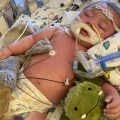Recently, while discussing loss of ovaries and the use of some drugs for treatment of endometriosis, I was surprised to learn how many women had not been advised about the use of Calcium and/or Vitamin D. Vitamin D deficiency is becoming more common. For women who have undergone medical treatments using GnRH agonists such as Danocrine, Danazol and Lupron (leuprolide), the risk osteoporosis, even at a younger age, increases. These drugs carry with them some risk of spinal and hip bone loss. Since spinal fractures and hip fractures are likely to cause immobility, they too can cause significant risks to the quality of our lives.
Medications that Cause Osteoporosis in Young Women
Bone density loss and osteoporosis are often considered a disease of older individuals and so may be missed in younger women, especially those who have undergone courses of Lupron, Danocrine or Danazol and other menopause inducing treatments for endometriosis. In premenopausal women, Lupron treatment causes a rapid decline in bone density within 6-12 months. Similarly, depot medoxyprogesterone acetate (DMPA), an injectable contraceptive used millions of young women, decreases bone mass and can increase the risk of fracture; ditto for long term steroid treatment for inflammatory conditions such as rheumatoid arthritis.
Osteoporosis and Fractures
According to experts, hip fractures are “considered to be the most devastating outcome of osteoporosis”. Part of the reason is once fractured, the hip often needs to be replaced or pinned but can only be done if the bone is healthy enough to accept the repair. When the bone will not tolerate the artificial hip or the pinning, then confinement to bed or chair becomes permanent. Confinement leads to a plethora of complications including blood clots, pneumonia, infection, cardiovascular disease as well as other fractures from further bone loss related to inactivity. A second concern is compression fractures of the spine which can occur with simply standing or lifting of items. Either of these conditions can be painful as well as confining. I saw a case a couple years ago where a lady was preparing an eight pound turkey for dinner, and simply turned it over in the sink, and felt a compression fracture in her spine occur. It was later confirmed on xray.
Identify Your Risk for Osteoporosis
There is no cure for osteoporosis, but there are things that can be done before bone loss becomes serious. First and foremost should be a consultation with your primary care physician or gynecologist to determine your risk. If you have been on any of the drugs listed above, are inactive, have a history of low calcium intake, been hysterectomized at a young age, or have an eating disorder, this may increase your risk and discussion of a dexascan to determine your current status would seem wise. You may find that some do not believe the risk of bone loss with the various drugs is an issue, but most reports do indicate it is a serious potential. You should also have your physician test your calcium and vitamin D levels. Many men and women are vitamin D deficient and do not even know it.
Low Vitamin D and Osteopenia or Osteoporosis
Once your bone status, calcium and vitamin D levels are known, then calcium and vitamin D should be discussed and prescribed as necessary. In the Northern Hemisphere of the world, many people are Vitamin D deficient, perhaps further increasing the risk. So assessment of your Vitamin D level would seem wise and can be done with a simple blood test. Adequate Vitamin D must be present for calcium to be properly utilized.
Weight Bearing Exercised and Vitamin D for Building Bones
If you fall in the low bone density category, (osteopenia) then diet, supplements and weight bearing exercise will become critical to stop or reverse the low bone density. It would appear that consistency is important if you are to stem this problem. Once you know what your doctor wants in the way of Vitamin D and Calcium, a pill minder kept where you eat or where you brush your teeth, can help avoid missing doses. The minder gets filled once a week or every two weeks depending on size. Finding ways to bear weight every day is also as important as the supplements. Walking or stair climbing are probably the safest weight bearing exercise, as there is less risk of a fall and potential injury. A nutritional consult may also be a good idea to review and improve dietary sources of calcium and Vitamin D.
For More Severe Osteoporosis
If you fall into the greater bone loss category (osteoporosis), then you are likely to see recommendations for one of the many osteoporosis medications. They are not perfect by any means and each has its own associated risks and side effects. Before taking anything, be sure to do your research, perhaps discuss with both your doctor and the pharmacist as to the safest ones to consider. To do nothing has even greater risks. Some newer drugs are on the horizon which may have fewer side effect issues.
Once you have actually been diagnosed with osteoporosis, it is important to follow scanning every couple years to be certain you are not continuing to lose ground so that adjustments in your treatment can be made.
Final Thoughts
When we are young we don’t think much about aging or the impact of diet and drugs on our bones now. Since many of the medications for osteoporosis are fraught with issues themselves, leading to spiral fractures of long bone, and other systemic side effects, so it is far better to prevent loss or reverse it before it becomes pathological.
For women with endometriosis particularly, several of the drugs commonly used in the past, and some still used today, have bone loss risks not fully apparent in the literature. Women with endometriosis have to be extra vigilant in caring for our bones. The same holds true for women who have had complete hysterectomies at a young age. Loss of the estrogens may accelerate bone loss and estrogen replacement may not be fully protective. So it becomes critical to be sure diet and supplements cover the calcium and Vitamin D issues and that weight bearing exercise such as walking and or stair climbing are in your daily activity.













Thank you.
It’s very concerning that just 6 to 12 months of Lupron can cause significant bone loss. Yet gynecologists continue to remove ovaries (endometriosis or not) as if the consequences are insignificant. I have read that 73% of women lose healthy ovaries at the time of hysterectomy despite lifetime risk of ovarian cancer being only 1.4%. Rapid bone loss is just one of the many medically documented adverse effects of ovary removal (or post-hysterectomy ovarian failure).
And hysterectomy is grossly overused too (a study showed 76% do not meet ACOG criteria). It has its own long list of adverse effects due to the anatomical changes – bladder and bowel displacement and dysfunction, vaginal prolapse, and loss of skeletal integrity (spine, hip, rib cage alignment). I have written articles detailing these adverse effects – http://www.hormonesmatter.com/post-hysterectomy-skeletal-anatomical-changes/ and http://www.hormonesmatter.com/hysterectomy-impact-pelvic-floor-organ-function/.
With all these negative consequences, why is hysterectomy emphasized in Graduate Medical Education programs? One renowned gynecologist says that GME requirements should count number of hysterectomies AVOIDED instead of number of hysterectomies performed.
Since this article was written, AAGL (American Association of Gynecological Laparoscopists) has posted a position statement that removing healthy ovaries should not be done as this surgery has no role in treating endometriosis. Likewise, a recent study by Mayo Clinic in Rochester has shown that removal of the uterus alone also may have an adverse impact on general health. This may indicate that removing a normal uterus is not innocuous but we also know taking the uterus in most cases has no beneficial impact on endometriosis.